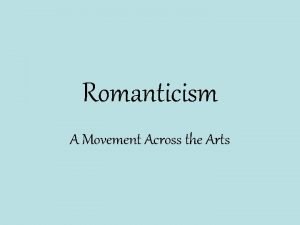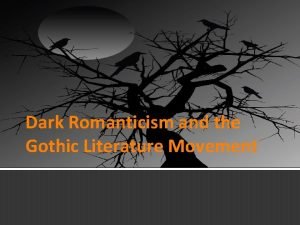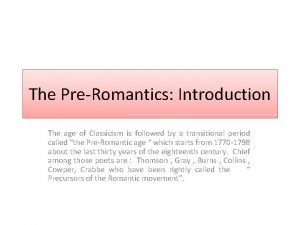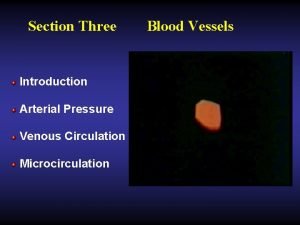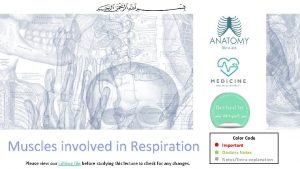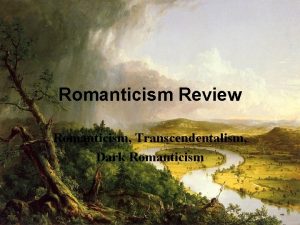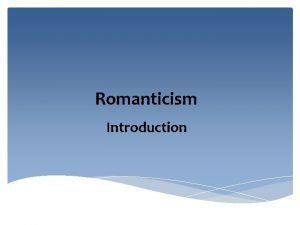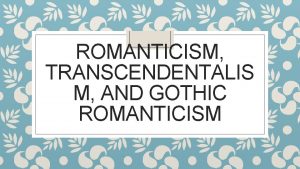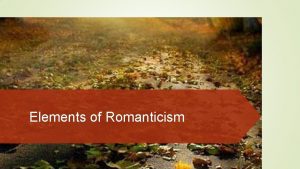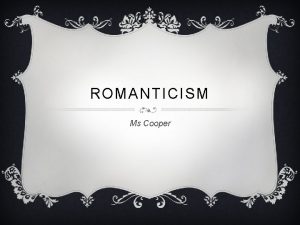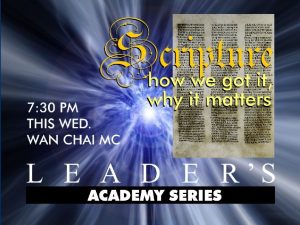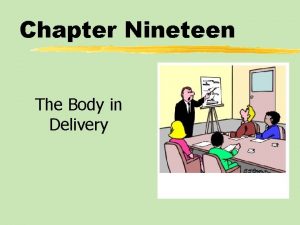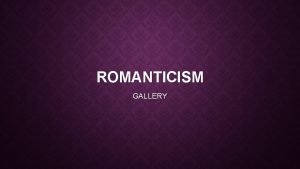Chapter Nineteen Introduction to Romanticism Romantic Inspiration Romantic











- Slides: 11

Chapter Nineteen: Introduction to Romanticism

Romantic Inspiration & Romantic Creativity • Self-expression, striving to communicate with passion no matter what imbalance (or excess) • Human imagination and the wonders of nature • Love: Longing and despair • Nature: Exploring the darker side of (human) nature • Fascination with the occult, supernatural, and the macabre • Wide range of expression shown in the musical expression marks that came into being

The Musician as “Artist, ” Music as “Art” • The duty of the artist was “the upbringing of mankind” • Composers were no longer servants to the aristocracy • Music no longer merely entertainment, but Art • Serious tone in the concert hall • “Art for Art’s sake. ” • Rebellion against Classical ideals • Evolution beyond Classical music

Romantic Ideals Change the Listening Experience • More serious tone in the concert hall • Sat in respectful silence for the revered figure of the Romantic artist-composer • Audience was emotionally engaged • Belief in the artist as superhero, reverence for the object as a “work of art, ” and expectations of silence and formal dress at a concert developed in the Romantic period

The Style of Romantic Music • Romantic Melody: Broad, sweeping themes – Lyrical and expressive, building to a grandiose climax – Longer phrases, irregular in shape – Rhythmically flexible

• Colorful Harmony: Contributes to the emotional intensity – Use of chromatic harmony, temporary dissonance – Rich, lush sounds – Unexpected harmonic shifts • Romantic Tempo: Rubato – Rubato: Italian for “robbed” time – Exaggerates the rhythmic flow – Gives performers more artistic freedom – Heard especially in the music of Frédéric Chopin

• Romantic Forms: • Monumental: Romantic composers expanded those used in the Classical Era – Length of individual movements increased dramatically • Miniature: Composers tried to capture the essence of a single mood, sentiment, or emotion – Character piece – Usually for the piano – Use of simple binary (AB) or ternary (ABA) form – Sometimes given a whimsical title, such as bagatelle, humoresque, arabesque, musical moment, caprice, romance, intermezzo, or impromptu – Schubert, Schumann, Chopin, Liszt, Brahms

The Romantic Orchestra • Technological advances that led to the modern symphony orchestra transformed 19 th-century music • Industrial revolution improved instruments – Flute – now made from silver, new fingering mechanism that increased the technical abilities of the instrument – Trumpet and French horn: Valves, improving technical facilities as well as intonation • Orchestra expanded by new instruments – Ophicleide, English horn, Cornet, Harps added • Greater size, great volume Mozart (1788) Berlioz (1830) Mahler (1889) Symphony in G minor Symphonie fantastique Symphony No. 1 Total players: 36 Total players: 89 Total players: 129 20 minutes 55 minutes 90 minutes

The Conductor • Larger, more complex music needed a musical “traffic cop” • Conductors started using a baton • Interpreter of the music

The Virtuoso • The nineteenth century was the age of the solo virtuoso • Musicians strived to raise their performance skills to unprecedented heights • Performing tricks and gimmicks • Franz Liszt (1811 -1886) • Niccolò Paganini (1782 -1840) • “The attraction of the virtuoso is like that of a circus performer; there’s always the hope that something disastrous will happen. ”

Coda • Increased attention to literature in the Romantic Era inspired new musical genres: the art song (Lied), the program symphony, and the tone poem • Technological innovations led to a much larger, more powerful piano, as well as the musical literature specifically written for it • Political events caused musical reverberations in the form of nationalistic musical style in both instrumental music and opera – Unification of Germany and Italy
 Inspiration romanticism
Inspiration romanticism Transcendentalism vs romanticism
Transcendentalism vs romanticism Difference between pre romanticism and romanticism
Difference between pre romanticism and romanticism The romanticism (1795 — 1835) what is romanticism
The romanticism (1795 — 1835) what is romanticism To room nineteen analysis
To room nineteen analysis In 1991
In 1991 Upper respiratory diagram
Upper respiratory diagram Fahraeus lindqvist effect
Fahraeus lindqvist effect Providential inspiration
Providential inspiration Trachea lining
Trachea lining Inspiration muscles
Inspiration muscles Difference between inspire and motivate
Difference between inspire and motivate
